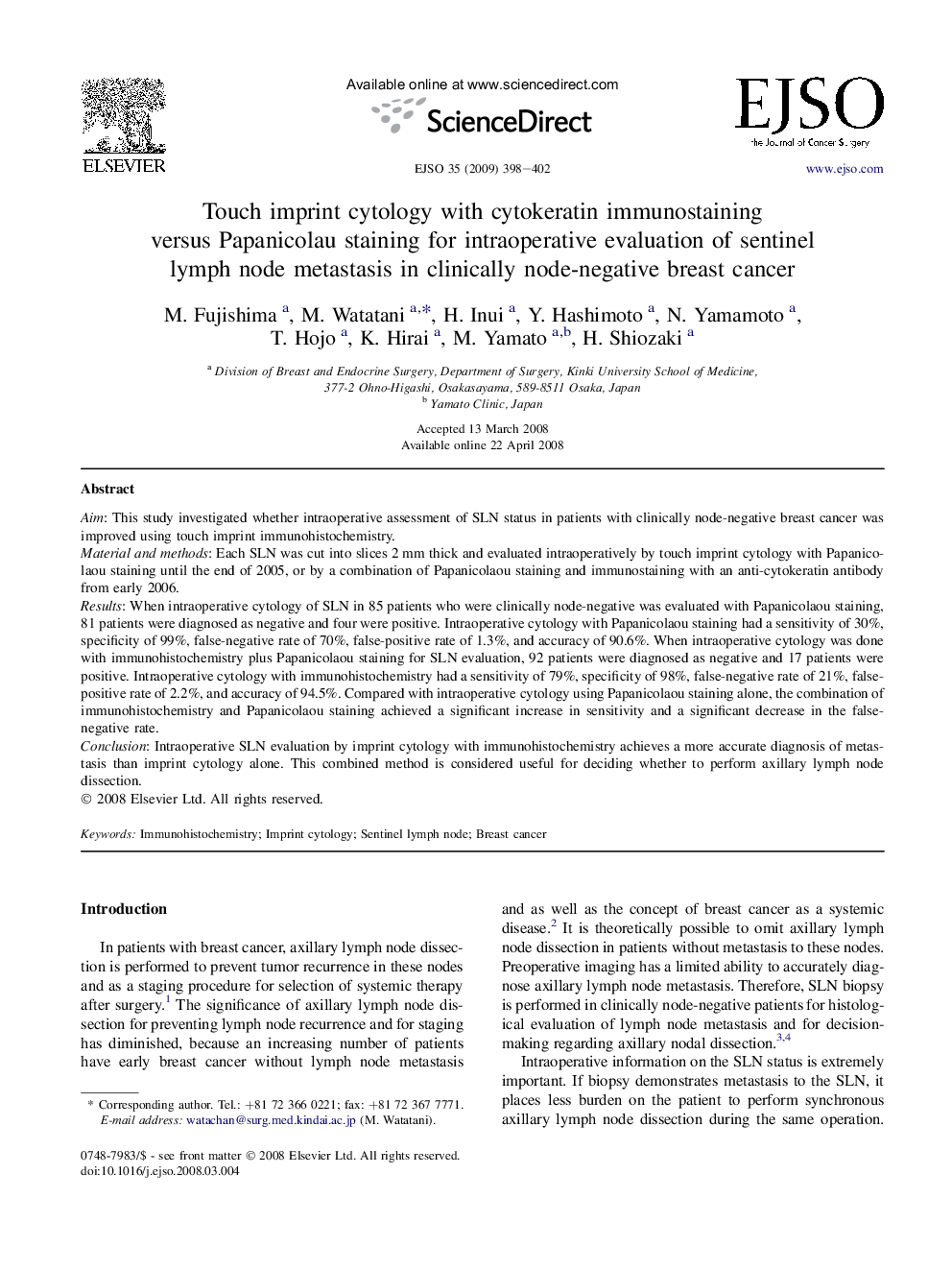| Article ID | Journal | Published Year | Pages | File Type |
|---|---|---|---|---|
| 3987793 | European Journal of Surgical Oncology (EJSO) | 2009 | 5 Pages |
AimThis study investigated whether intraoperative assessment of SLN status in patients with clinically node-negative breast cancer was improved using touch imprint immunohistochemistry.Material and methodsEach SLN was cut into slices 2 mm thick and evaluated intraoperatively by touch imprint cytology with Papanicolaou staining until the end of 2005, or by a combination of Papanicolaou staining and immunostaining with an anti-cytokeratin antibody from early 2006.ResultsWhen intraoperative cytology of SLN in 85 patients who were clinically node-negative was evaluated with Papanicolaou staining, 81 patients were diagnosed as negative and four were positive. Intraoperative cytology with Papanicolaou staining had a sensitivity of 30%, specificity of 99%, false-negative rate of 70%, false-positive rate of 1.3%, and accuracy of 90.6%. When intraoperative cytology was done with immunohistochemistry plus Papanicolaou staining for SLN evaluation, 92 patients were diagnosed as negative and 17 patients were positive. Intraoperative cytology with immunohistochemistry had a sensitivity of 79%, specificity of 98%, false-negative rate of 21%, false-positive rate of 2.2%, and accuracy of 94.5%. Compared with intraoperative cytology using Papanicolaou staining alone, the combination of immunohistochemistry and Papanicolaou staining achieved a significant increase in sensitivity and a significant decrease in the false-negative rate.ConclusionIntraoperative SLN evaluation by imprint cytology with immunohistochemistry achieves a more accurate diagnosis of metastasis than imprint cytology alone. This combined method is considered useful for deciding whether to perform axillary lymph node dissection.
